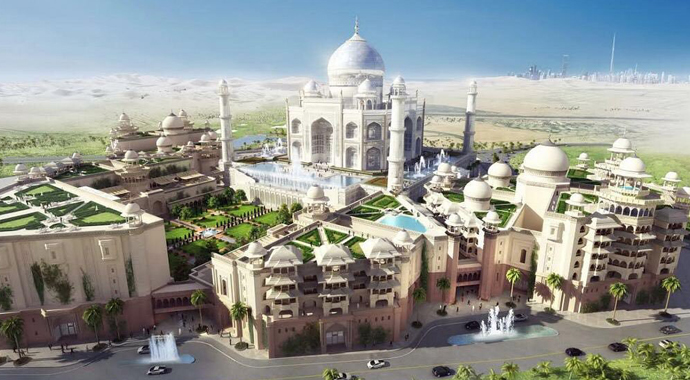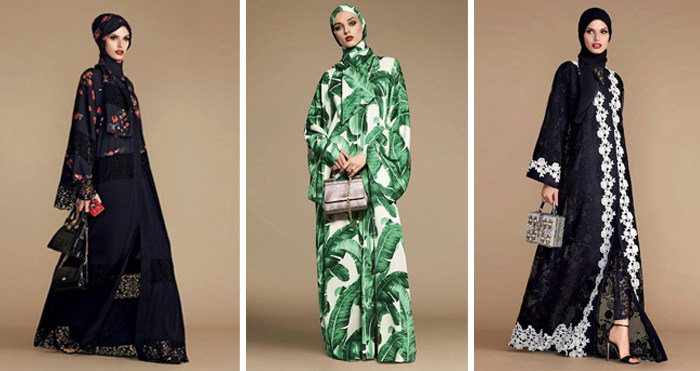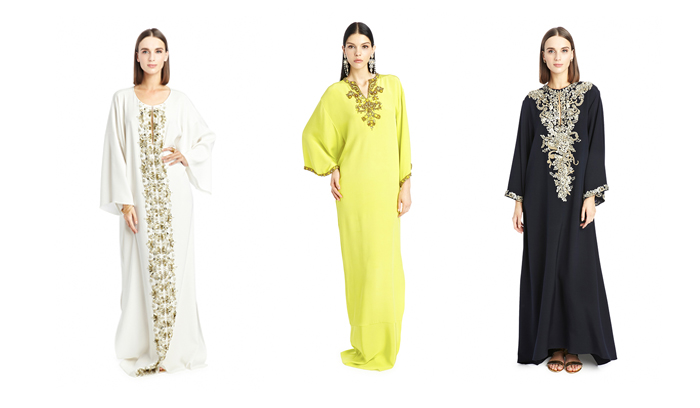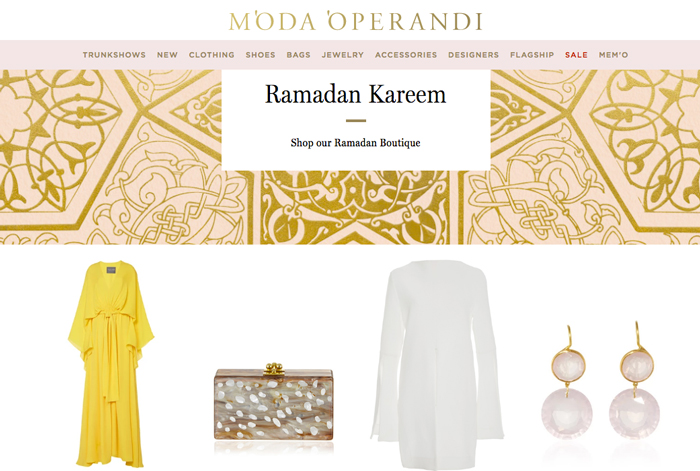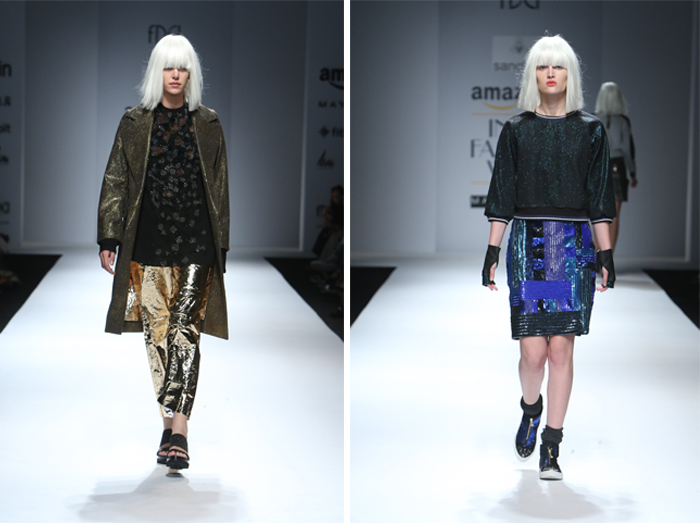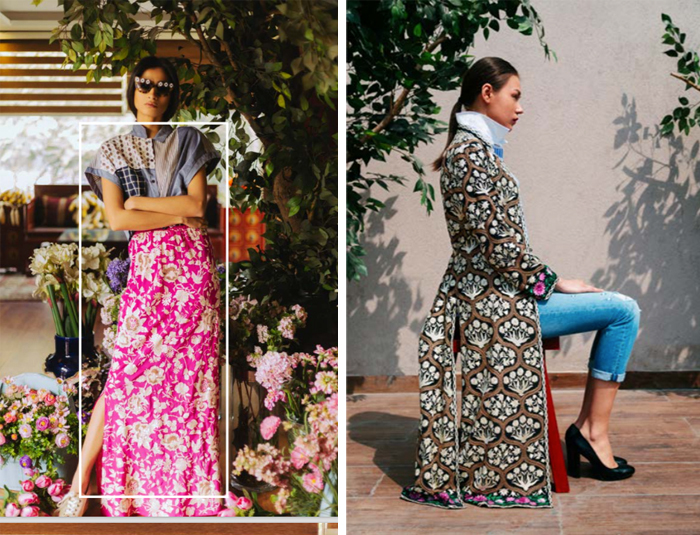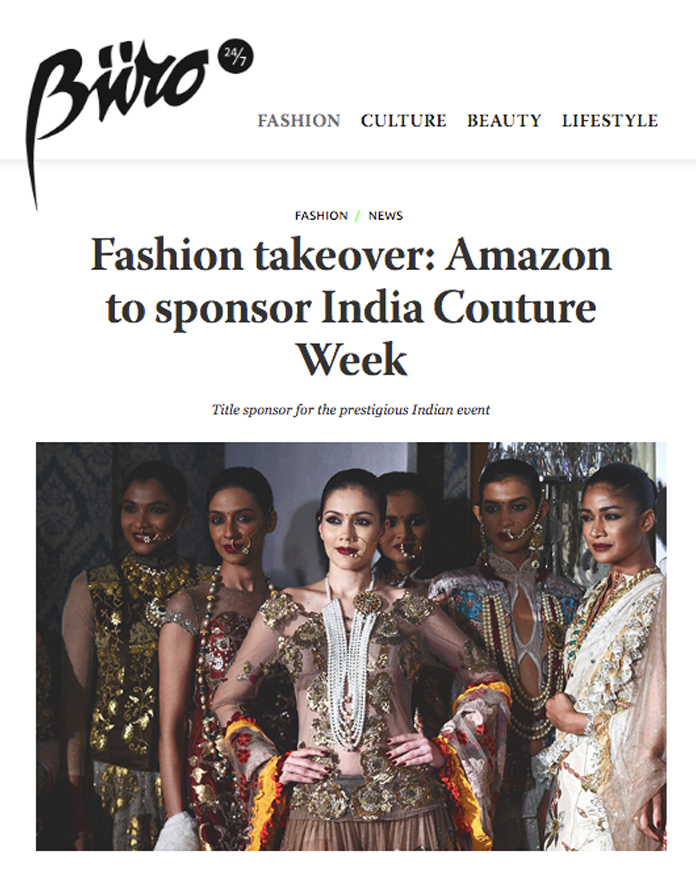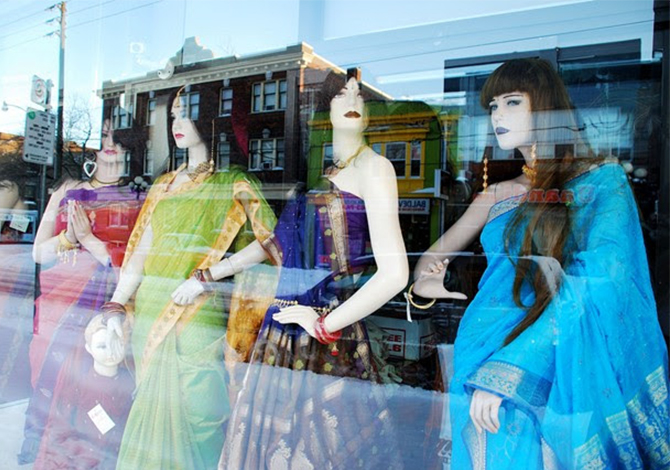Season after season, the front row at Lakme and Amazon India Fashion Week (AIFW) is dotted with buyers from the Middle East. Little is actually known about what they are buying, or who they are buying for; they come and go quietly, are not covered by the fashion media nor socially active among our community. But it’s this expansive region—from Oman and the UAE to Saudi Arabia and Kuwait—that is Indian fashion’s biggest international market.
According to a report by Thomson Reuters, Muslim shoppers spent USD 266 billion on clothing and footwear in 2013 (more than Japan and Italy combined). That figure is expected to reach USD 488 billion by 2019. It is a staggering statistic that helps to understand why some of the biggest players on the international fashion scene have designed collections aimed at a Middle Eastern clientele.
From Dolce & Gabbana’s first-ever abaya and hijab collection, launched earlier this year, to DKNY and Oscar de la Renta’s Ramadan capsule lines, and even Net-a-Porter.com and ModaOperandi.com’s specially curated Ramadan sections, it’s clear that designers and retailers around the world – India included – have their eyes turned to the Middle East.
Neha Kohli Dhingra, Senior Manager of Business Development at the Fashion Design Council of India confirms Middle Eastern retailers are equally interested in our fashion designers: “We get buyers from Riyadh, Dubai, Kuwait, Bahrain and Doha” who attend AIFW on a seasonal basis.
Above: images | D&G’s abaya and hijab collection, Oscar de la Renta’s Ramadan capsule line, Moda Operandi’s Ramadan section
Going by the scope of labels and styles offered in stores across the Middle East, it is clear that the Arab consumer is an experimental one. Interestingly, there is also a strong element of inclusivity at play. Saks Fifth Avenue Dubai, for example, carries Manish Arora and Sanchita Ajjampur right alongside German designer Philipp Plein, Brit label Self Portrait and Bahrain brand Noon by Noor.
“The Middle East is a very important market for us, and one that we would like to develop further,” says Ajjampur. “Quality and craftsmanship coupled with versatility is what the Middle East audience is looking for. We work closely with the buyers to adapt our designs to local requirements, as dress codes are stricter compared to India or the West. Instead of tunics skimming the knee we lengthen them to the floor, necklines are made higher, short sleeves are made long … We also often have requests for additional beading and embroidery on both ready-to-wear and footwear for an even more dramatic look and feel.”
Above: images | Sanchita Ajjampur A/W 2016
“It’s a huge growing segment for us,” says Gaurav Gupta, who retails in Qatar, Saudi Arabia, Kuwait and the UAE. “What makes our clothes—sophisticated, sculptural drapes with embellishments—work there is that they are unique, fashion forward, and very flattering on the body.”
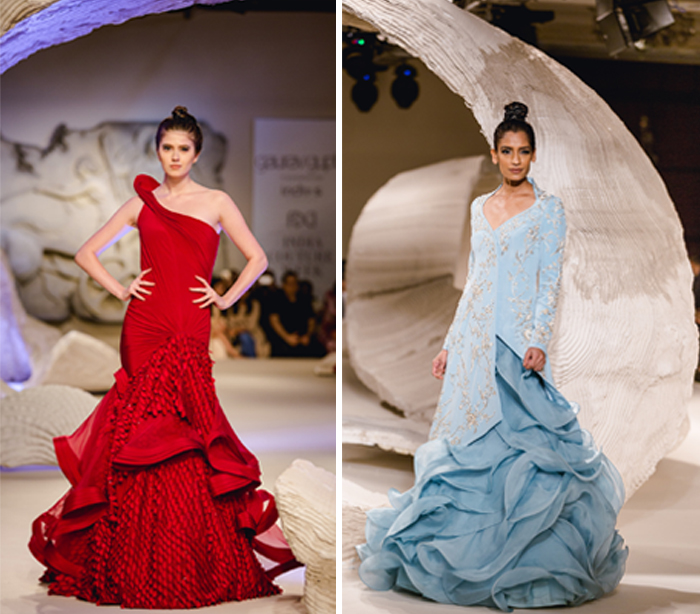
Above: images | Gaurav Gupta Couture 2016
The list of homegrown designers with a presence in the Middle East is steadily growing. Dubai is the lone international outpost for Indian multi-brand store Kimaya, which stocks labels like Tarun Tahiliani, Anita Dongre, and Falguni & Shane Peacock. Dubai-based store Vesimi and Kuwait City store Laki Noon, whose buyers regularly attend Lakme Fashion Week, stock a range of contemporary labels; the likes of AM:PM, Antar Agni, Pankaj & Nidhi and Quirkbox at Vesimi while Laki Noon carries indie labels like P.E.L.L.A, Ikai by Ragini Ahuja and Ka Sha by Karishma Shahani Khan.
The mix of labels implies that it’s not just couture or occasion wear that’s finding an audience in the region, but also well-crafted Indian prêt—an encouraging sign for young, independent designers who rely on lucrative international orders to keep their businesses profitable.
“We sell a lot in the Middle East and it’s heartwarming to see the positive response,” says designer Amit Aggarwal. “Middle Eastern women enjoy the lavishness that our couture line offers but they also love our diffusion line AM.IT, which they team with their everyday wear. They understand what the brand is and are daring enough to wear our most elaborate pieces.”
Above: images | Bina Modi A/W 2016 and S/S 2016
Multi-brand store s*uce in Dubai, known for its discerning mix of international labels, has its fair share of Indian labels, including Amit Aggarwal, Payal Pratap and Vineet Bahl, and will soon be adding Rimzim Dadu to the list.
“All of these brands do well at s*uce, especially with our Arab clientele looking for kaftans for Ramadan or henna nights,” says Hedaya Al Rahmah, creative buyer. “They appreciate the beautiful colours Indian designers work with. Plus, we love the easy, feminine cuts, which suit all body types, and the Indian workmanship, such as detailed embroidery.”
Multi-designer boutique Studio 8 on Jumeirah Beach in Dubai carries couture and bridal wear by Manish Malhotra, and also regularly hosts pop-up and trunk shows to introduce a range of Indian designers, such as Suneet Varma and Nikasha, to the Middle Eastern market.
For Ramadan 2014, Harvey Nichols Riyadh invited 85 Indian designers to create custom outfits and accessories for their month-long Ramadan India Caravan festival. In a sign of India’s continuing sartorial influence on the region’s women, Harvey Nichols Dubai invited Delhi-based label Bina, founded by Bina Modi, to be a part of its Regional Pop-Up earlier this month, a first for an Indian brand.
Above: image | Amazon India Couture Week featured in web publication Buro 24/7 Middle East
“Indian fashion traditionally tends to be couture-like and occasion-centric,” says Priyal Bhartia, creative director. “These two factors work well with the Middle Eastern audience. They love unique, well-crafted, embroidered pieces that can be worn during festivals, weddings, Eid etc.”
For Indian designers looking outward, the Middle East has proven to be a rewarding market. Not only does it afford them the opportunity to cross borders and reach new consumers, a requirement for any brand that wishes to grow, but it also initiates a much needed dialogue between India, an emerging design talent, and the Middle East, a luxury consumer market that’s indisputably important, particularly in light of shrinking markets elsewhere.
Note: Tarun Tahiliani is / was a client of the Border&Fall agency.

